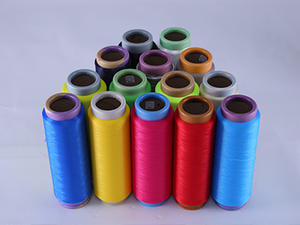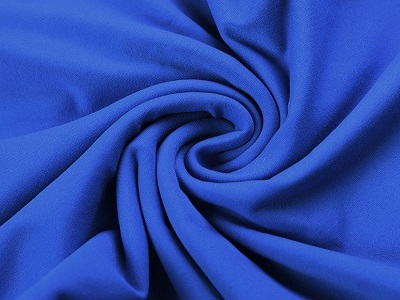There are many sewing thread in the market. Among them, polyester sewing thead and nyon fiaments are twro common kinds of sewing thead Do you know the difference between them? Next we will introduce you the difference between polyester yarn and nylon yarn.
About polyester
Polyester is an important variety in synthetic fiber and is the trade name of polyester fiber in China. A fiber-forming polymer produced by esterification or transesterification and polycondensation of PTA or DMT andMEG-Polyethylene terephthalate (PET). It is a fiber made by spinning and post-treatment.
About nylon
Nylon was developed by Carothers, an American scientist, and a research team led by him. It is the first synthetic fiber in the world. Nylon is a kind of polyamide fiber. The appearance of nylon has revolutionized textiles products. Its synthesis is a major breakthrough in the synthetic fiber industry and is a very important milestone in high polymer chemistry.
Differences in Performance
Nylon performance
Strong, wear-resistant, ranking first among all fibers. Its wear-resistance is 10 times of that of cotton fiber and dry viscose fiber, and 140 times of that of wet fiber. Therefore, its durability is excellent. The elastic and elastic recovery of the nylon fabric is excellent, but it is easily deformed by external force, so the fabric is easily wrinkled during the wearing process. It is poor in ventilation and easy to generate static electricity.
Polyester Performance
High strength
The short fiber strength is 2.6 to 5.7 cN/dtex, and the high strength fiber is 5.6 to 8.0 cN/dtex. Due to its low hygroscopicity, its wet strength is essentially the same as the dry strength. The impact strength is 4 times higher than that of nylon and 20 times higher than viscose.
Good elasticity
The elasticity is close to that of wool, when it is stretched by 5% to 6%, it can be almost completely recovered. The wrinkle resistance is superior to other fibers, that is, the fabric is not wrinkled, and the dimensional stability is good. The modulus of elasticity is 22 to 141 cN/dtex, which is 2 to 3 times higher than that of nylon.
Good water absorption
Good grinding resistance. Wear resistance of polyester is second only to nylon. It is better than other natural and synthetic fibers, and its light resistance is second only to acrylic fiber.
Differences between the application of polyester and nylon
Consideing the hygroscopicity, nyion fabricis a good variety in synthetic fabrics,so gaments madeof nylon are more comiortable to wear than polyester gaments. lt has good sputum and corosion resistance,but the heat and lghtresistance are not good enough.The roning temperature should be contolled below 140 ℃C.Pay attention to the conditons of washing and maintenance, so as not to damage the fabric.Nylon fabric is a light fabic, which is only ited afe polypropylene and acrylic fabrics in synthetic fabrics. Therefore, it is suitable for mountaineering cloth and winter cloth.
Polyester fabric has poor hygroscopicity and are sultry when wearing. It is easy to carry static electricity and stain dust, which affects the appearance and comfort. However, it is very easy to dry after washing, and is not deformed. Polyester is the best heat-resistant fabric in synthetic fabrics. The melting point is 260 ° C and the ironing temperature can be 180 ° C. It has a thermoplastic perfomance and can be made into a pleated skirt with long pleats.
The polyester fabric has poor melting resistance, and it is easy to form holes in the case of soot or mars. Therefore, wearing polyester cloth should avoid contact with cigarette butts, sparks, etc. Polyester fabrics have good wrinkle resistance and shape retention, so they are suitable for outerwear.
Post time: Nov-08-2022








